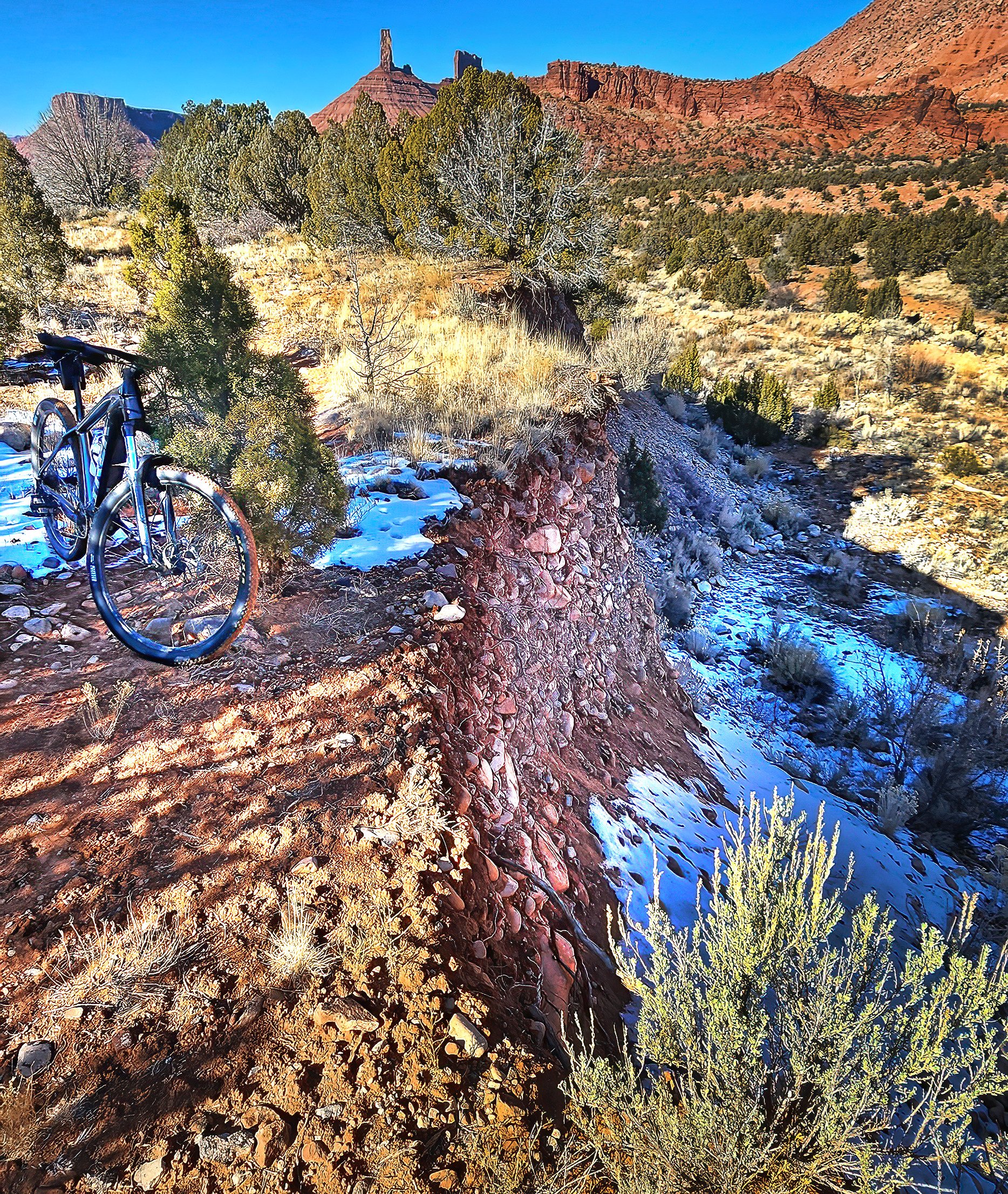shows dedication to the preservation of the night sky through the implementation and enforcement of outdoor lighting ordinances, engages in dark sky education, and enjoys citizen support of dark skies. Our tiny town of Castle Valley, Utah has finally been so designated by DarkSky International and the formal announcement will be forthcoming after the holidays.
The Milky Way above Adobe Mesa (left) and Castleton Tower, the Rectory and Priest and Nuns (right) as captured from Professor Valley in June 2021. (Click on image to enlarge.)































